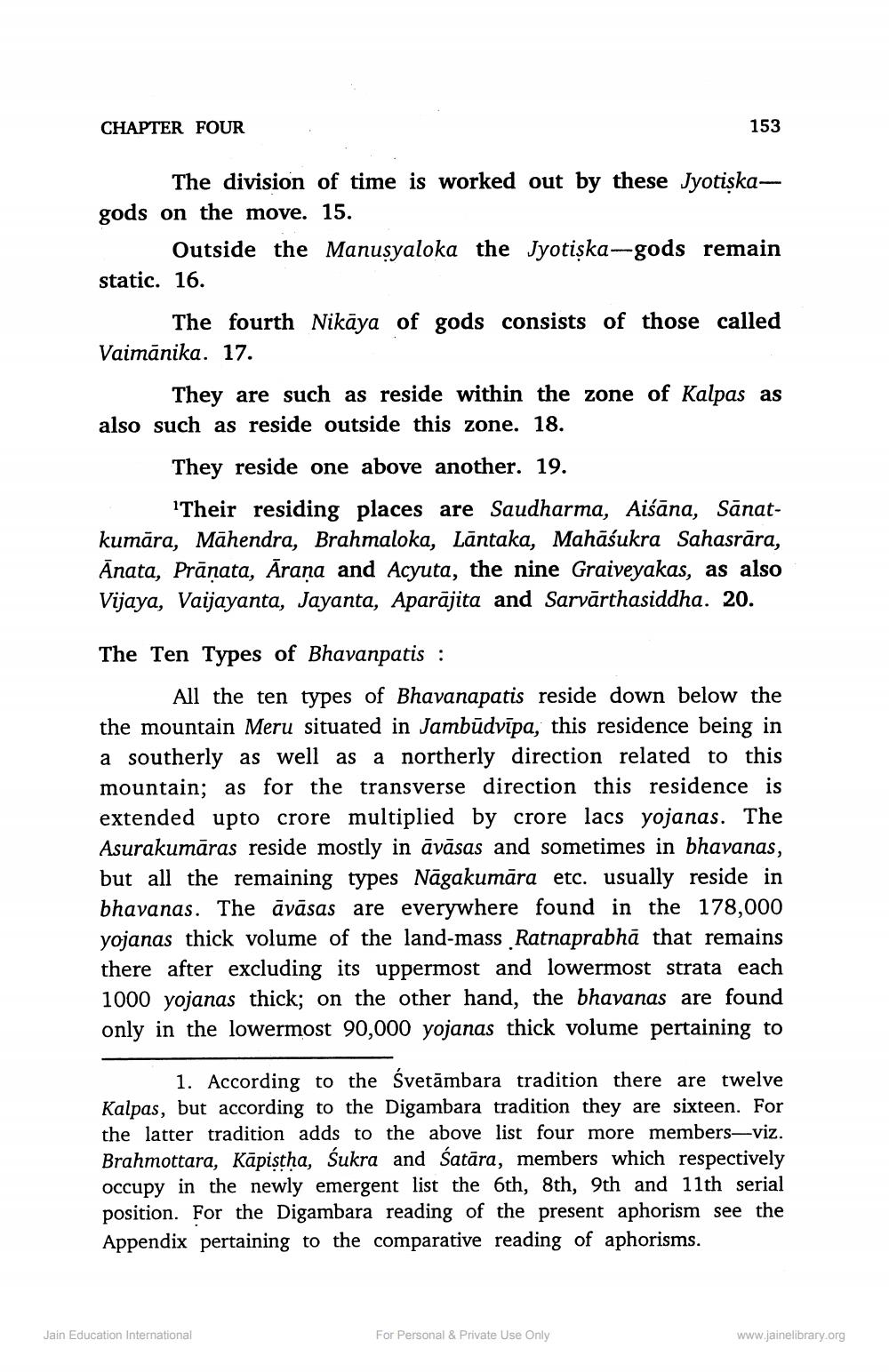________________
CHAPTER FOUR
153
The division of time is worked out by these Jyotiskagods on the move. 15.
Outside the Manusyaloka the Jyotişka-gods remain static. 16.
The fourth Nikāya of gods consists of those called Vaimānika. 17.
They are such as reside within the zone of Kalpas as also such as reside outside this zone. 18.
They reside one above another. 19.
Their residing places are Saudharma, Aiśāna, Sānatkumāra, Māhendra, Brahmaloka, Lāntaka, Mahāśukra Sahasrāra, Ānata, Prāṇata, Āraņa and Acyuta, the nine Graiveyakas, as also Vijaya, Vaijayanta, Jayanta, Aparājita and Sarvārthasiddha. 20.
The Ten Types of Bhavanpatis :
All the ten types of Bhavanapatis reside down below the the mountain Meru situated in Jambūdvīpa, this residence being in a southerly as well as a northerly direction related to this mountain; as for the transverse direction this residence is extended upto crore multiplied by crore lacs yojanas. The Asurakumāras reside mostly in āvāsas and sometimes in bhavanas, but all the remaining types Nāgakumāra etc. usually reside in bhavanas. The āvāsas are everywhere found in the 178,000 yojanas thick volume of the land-mass Ratnaprabhā that remains there after excluding its uppermost and lowermost strata each 1000 yojanas thick; on the other hand, the bhavanas are found only in the lowermost 90,000 yojanas thick volume pertaining to
1. According to the Svetāmbara tradition there are twelve Kalpas, but according to the Digambara tradition they are sixteen. For the latter tradition adds to the above list four more members—viz. Brahmottara, Kāpistha, Sukra and Satāra, members which respectively occupy in the newly emergent list the 6th, 8th, 9th and 11th serial position. For the Digambara reading of the present aphorism see the Appendix pertaining to the comparative reading of aphorisms.
Jain Education International
For Personal & Private Use Only
www.jainelibrary.org




